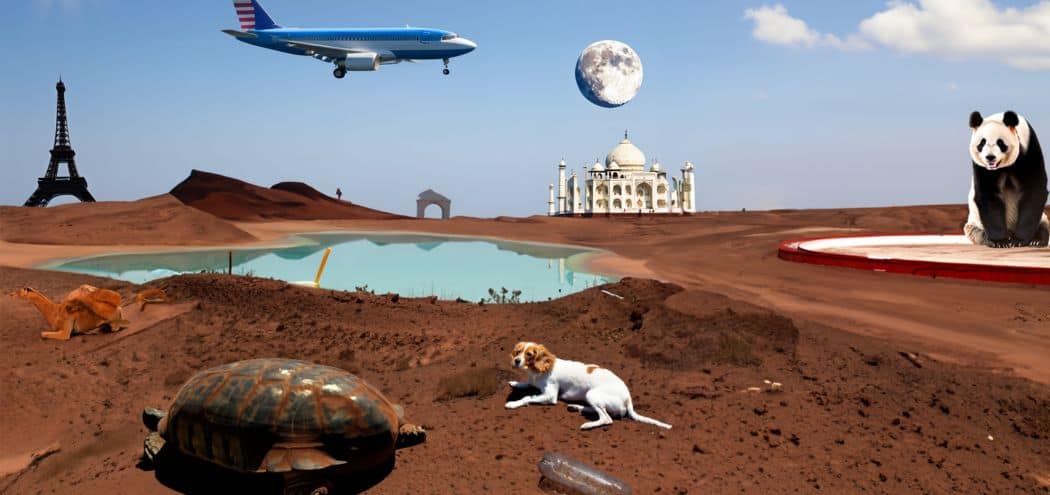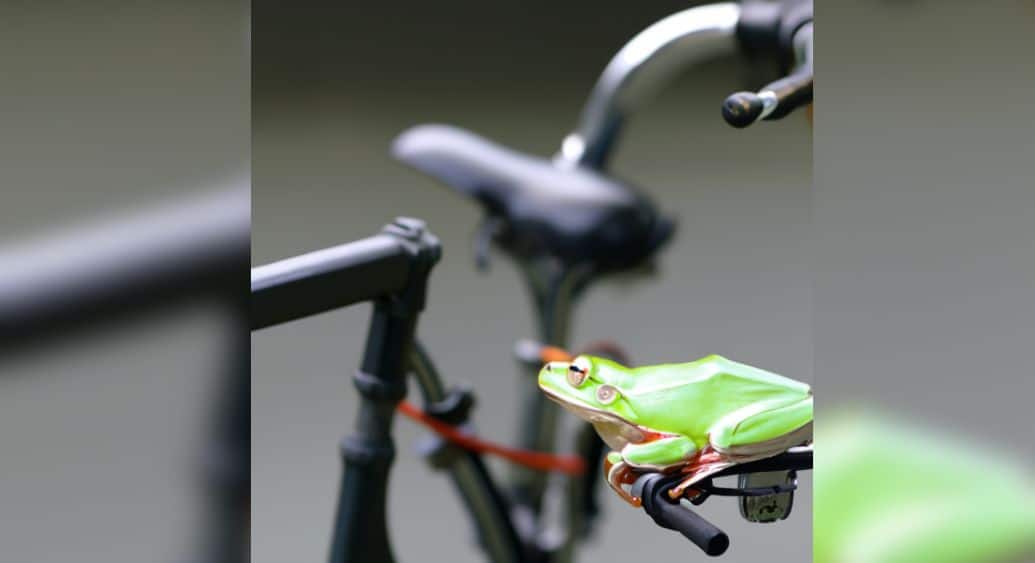
As part of the R&D work we are doing in the newly launched Cremarc Innovation Hub, we started experimenting with image generative AI, and applying it to our advertising and design. In this blog, we share our findings about generative AI, as well as explaining how marketers and designers can leverage its power today, to make their jobs easier.
What is image generative AI?
Image generative AI is a type of artificial intelligence that is capable of generating images or in response to text prompts, previous learnings and/or environment understanding. Generative AI models learn the patterns and structure of training data that is input into them and then generate new data that has similar characteristics.
For example, the mainstream generative AI tools will have been trained with hundreds of images of frogs, and hundreds of images of bicycles, so if you ask it to visualise a frog on a bicycle, it can create something that resembles this but piecing together its training data into a consolidated output.
Image generative AI is a type of artificial intelligence that is capable of generating images or in response to text prompts, previous learnings and/or environment understanding. Generative AI models learn the patterns and structure of training data that is input into them and then generate new data that has similar characteristics.
For example, the mainstream generative AI tools will have been trained with hundreds of images of frogs, and hundreds of images of bicycles, so if you ask it to visualise a frog on a bicycle, it can create something that resembles this but piecing together its training data into a consolidated output.

(Photo: Produced by Adobe’s generative AI using the prompt “Frog on a bicycle”)
Incredibly, the above image is completely AI-generated – although it appears as if it is a genuine photograph.
Applications of generative AI
Because of generative AI’s ability to create both abstract artwork and photo-realistic imagery, or edit/blend both styles, the technology has potential applications across a variety of sectors. Marketing isn’t the only industry that will be impacted by it.
This subset of AI will likely be useful in legal, education, blue light, housing, medical – the list goes on!
There are however concerns about the potential spread of fake news with the quality of deepfake video and photo-realistic imagery that can be output. Generative AI could be used for good – but there will almost certainly be individuals using it nefariously to manipulate and deceive people or companies.
This is where advertisers must be careful. Although Adobe’s built-in AI capabilities, the more ethical of the options, is auto blocking any attempt to generate imagery of brands, products or famous individuals, there will still be times that creatives and designers use imagery that gets backlash. That’s just an expectation when there are no visualisation boundaries.
How can advertisers apply generative AI today?
In our first research report for the Cremarc Innovation Hub, that we released in Q1 2023, we spoke about DALL-E – Open AI‘s image-generative AI tool. DALL-E came under fire because the images used to train it for output artwork and imagery was copyrighted imagery used without the artist, illustrator, or photographer’s consent.
Since our report, DALLE-2 was released, which was subsequently hammered with the same challenges and criticism. Adobe then released their own version, housed within Photoshop BETA and Adobe Firefly. They brought generative AI to the mainstream and even better, they trained their model with consensual imagery and artwork.
So, Adobe made generative AI accessible to most marketers, advertisers, and designers. Photoshop, and the wider creative cloud are tools that most people in the sector have access to in some way. With that in mind, we can start using the power of generative AI today.
At Cremarc, a scaling B2B digital marketing agency, we’ve been toying with ideas for how we can start using it and have since rolled it out to our graphic design department for client collateral production, website design, and advert creation.
We can see generative AI empowering us in a few ways. The key areas we see it supporting our agency are as follows:
• Improve the quality of imagery we use for client advertising.
• Repair/extend images of people for better event/webinar promotion.
• Support our design team with even more unique mood boards and ideas.
• Always find the right image for the job – we don’t need to find them anymore because we can create them from scratch!
Marketing ROI justification is difficult for all marketing agencies – but we now know that our team can produce better quality work on the same timeframe, and therefore the same budget! Let’s just say our clients are already loving the power of generative AI!
Designers will be the most impacted. Currently, only our design staff have been given access to Adobe’s built-in AI features. We believe that it could be rolled out to creatives and strategists too, though. For fast visual representation and mock-ups during the full creative process, AI can visualise conceptual ideas. For briefing a design team, AI can help to formulate the idea in its infancy which will help designers better pick apart the initial brainwave from the strategists.
Can generative AI produce adverts?
While this subset of AI can certainly be used in the process of creating adverts, depending on the complexity and requirements, it may struggle to complete the full process itself.
AI-powered tools like Unbounce can choose imagery and copy from a pre-defined bank of options, and optimise depending on user behaviour and demographic data, and other AI tools can produce textless imagery from prompts. Currently, though, there are no AI tools that can look at the market, build a strategy, produce ads, and then use the results to optimise said ads.
Generative AI can be used in the brainstorming phase of advertising, as part of a creative brief, and as part of the design process, but it’s yet to take on the full end-to-end project. Subsequently, designers and advertisers’ jobs will be safe for a few more years…. In 5 or 10 years’ time though, AI may have progressed beyond our current skillset, in which case we’ll all be out of a job!
I think we’re safe now though.
Generative AI means that designers and creatives now have no creative limits. If there is any idea that seems impossible to visualise, we can now portray it through a generative AI tool. Advertising is about to get even better, and therefore more competitive. If you want to stand out, then you need to start thinking about how you apply generative AI to your business, today.
If you would like to find out more about what the Cremarc Innovation Hub is, and how we are pushing development and experimentation for our clients, please read our official press release.